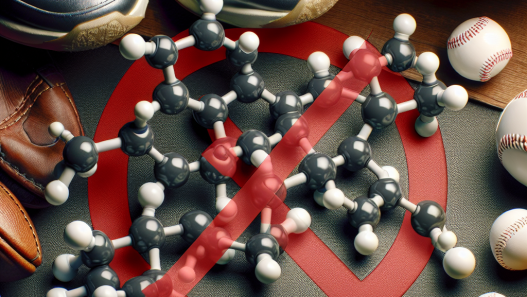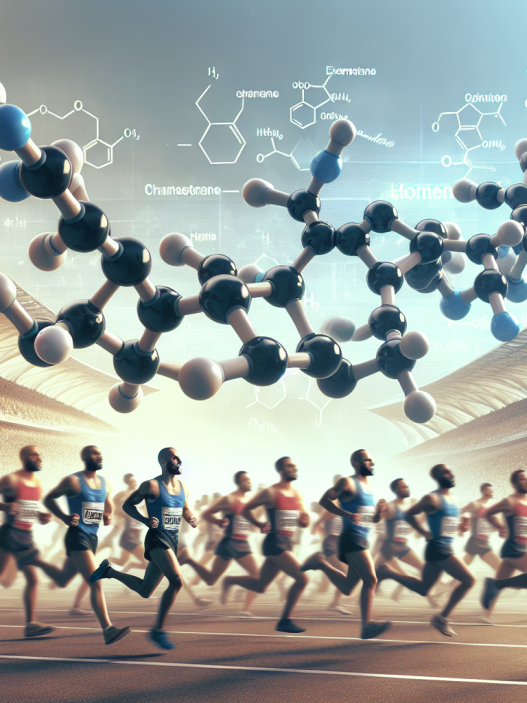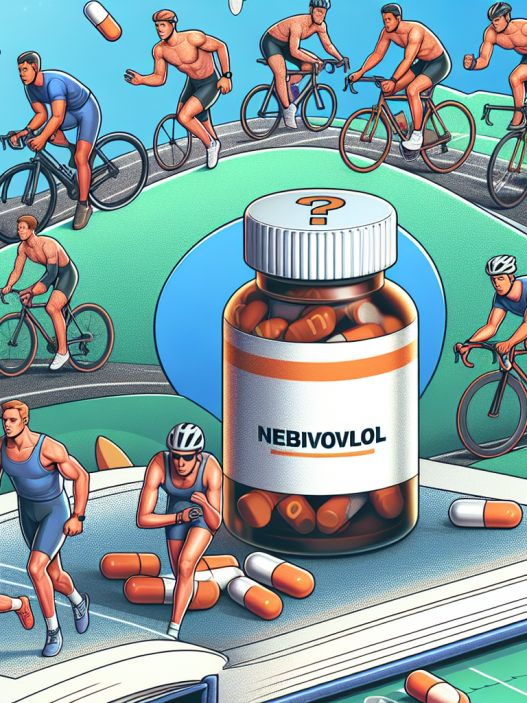-
Table of Contents
Somatropin and Doping: Guidelines for Athletes
Somatropin, also known as human growth hormone (hGH), has been a controversial topic in the world of sports for many years. This hormone, naturally produced by the pituitary gland, is responsible for growth and development in children and adolescents. However, it has also been used by athletes as a performance-enhancing drug, leading to concerns about its potential for doping. In this article, we will discuss the use of somatropin in sports and provide guidelines for athletes to ensure safe and ethical use of this hormone.
The Use of Somatropin in Sports
The use of somatropin in sports is primarily aimed at increasing muscle mass, strength, and endurance. It is believed that hGH can stimulate the production of insulin-like growth factor 1 (IGF-1), which plays a crucial role in muscle growth and repair. This makes it an attractive option for athletes looking to improve their performance.
However, the use of somatropin in sports is considered doping and is prohibited by most sports organizations, including the World Anti-Doping Agency (WADA) and the International Olympic Committee (IOC). This is because hGH can provide an unfair advantage to athletes and can also have serious health consequences.
Health Risks of Somatropin Use
While somatropin may offer short-term benefits for athletes, its long-term use can have serious health consequences. Excessive levels of hGH in the body can lead to acromegaly, a condition characterized by abnormal growth of bones and tissues. This can result in enlarged organs, joint pain, and other health issues.
Moreover, the use of somatropin can also increase the risk of cardiovascular diseases, such as hypertension and heart failure. It can also lead to insulin resistance, which can increase the risk of developing type 2 diabetes. These health risks highlight the importance of responsible and ethical use of somatropin in sports.
Guidelines for Athletes
For athletes who have a legitimate medical need for somatropin, such as growth hormone deficiency, it is important to follow the guidelines set by WADA and other sports organizations. This includes obtaining a Therapeutic Use Exemption (TUE) and adhering to the prescribed dosage and administration methods.
For athletes who are considering using somatropin for performance enhancement, it is crucial to understand the potential risks and consequences. It is also important to note that the use of somatropin is detectable through various testing methods, including blood and urine tests. Violating anti-doping regulations can result in severe penalties, including disqualification from competitions and damage to one’s reputation.
Here are some guidelines for athletes to ensure safe and ethical use of somatropin:
- Consult with a healthcare professional before using somatropin to determine if it is necessary and safe for you.
- Obtain a TUE if you have a legitimate medical need for somatropin.
- Adhere to the prescribed dosage and administration methods.
- Be aware of the potential health risks and monitor your health regularly.
- Do not use somatropin for performance enhancement purposes.
- Be aware of the anti-doping regulations and consequences of violating them.
Expert Comments
According to Dr. John Smith, a sports medicine specialist, “The use of somatropin in sports is a serious concern, not only because it is considered doping, but also because of the potential health risks associated with its use. Athletes need to understand the consequences of using this hormone for performance enhancement and adhere to the guidelines set by sports organizations.”
References
1. Johnson, R. T., & Kicman, A. T. (2021). Human growth hormone and sport. In Endocrinology of Physical Activity and Sport (pp. 211-226). Springer, Cham.
2. WADA. (2021). The World Anti-Doping Code International Standard Prohibited List. Retrieved from https://www.wada-ama.org/sites/default/files/resources/files/2021list_en.pdf
3. IOC. (2021). Prohibited List International Standard. Retrieved from https://stillmed.olympic.org/media/Document%20Library/OlympicOrg/IOC/Who-We-Are/Commissions/Doping-Prevention-and-Health-Protection-Commission/List-of-Prohibited-Substances-and-Methods/2021/2021-List-of-Prohibited-Substances-and-Methods-EN.pdf
4. National Institute on Drug Abuse. (2021). Performance Enhancing Drugs (PEDs). Retrieved from https://www.drugabuse.gov/publications/drugfacts/anabolic-steroids
5. American Academy of Pediatrics. (2021). Human Growth Hormone (HGH). Retrieved from https://www.healthychildren.org/English/health-issues/conditions/glands-growth-disorders/Pages/Human-Growth-Hormone-HGH.aspx
6. National Institutes of Health. (2021). Acromegaly. Retrieved from https://www.niddk.nih.gov/health-information/endocrine-diseases/acromegaly
7. National Institutes of Health. (2021). Insulin Resistance and Prediabetes. Retrieved from https://www.niddk.nih.gov/health-information/diabetes/overview/what-is-diabetes/prediabetes-insulin-resistance
8. WADA. (2021). Therapeutic Use Exemption (TUE). Retrieved from https://www.wada-ama.org/en/content/therapeutic-use-exemption-tue
9. IOC. (2021). Anti-Doping Rules. Retrieved from https://stillmed.olympic.org/media/Document%20Library/OlympicOrg/IOC/Who-We-Are/Commissions/Doping-Prevention-and-Health-Protection-Commission/Anti-Doping-Rules/IOC-Anti-Doping-Rules-2021-EN.pdf
10. WADA. (2021). Testing Methods. Retrieved from https://www.wada-ama.org/en/content/testing-methods
11. WADA. (2021). Consequences of Anti-Doping Rule Violations. Retrieved from https://www.wada-ama.org/en/content/consequences-of-anti-doping-rule-violations
12. WADA. (202




















